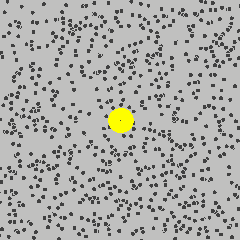Brownian Motion (or Wiener Process) is a fundamental concept in probability theory and stochastic processes. It describes the random motion of particles suspended in a fluid, but it also has applications in various fields such as physics, finance, and biology.

Properties
The best way to describe Brownian motion is through its defining properties:
- (Start at zero) almost surely.
- Independent increments: For , the increments are independent.
- Stationary Gaussian increments: For , .
- Continuous paths: With probability , is continuous (nowhere differentiable a.s.).
- Martingale: is a martingale; also is a martingale.
- Scaling (self-similarity): For any , .
- Quadratic variation: ; sums of over partitions converge to .
- Markov property: Conditional on , the future increments depend only on .
- Time homogeneity: Distributions depend only on time differences .
Definition
Brownian motion can be formally defined as a stochastic process that satisfies the properties listed above. It can be constructed in various ways, such as through the limit of random walks or using the Wiener measure.
As a function: